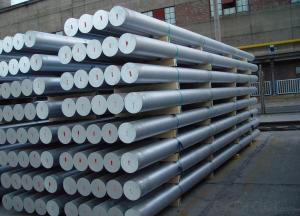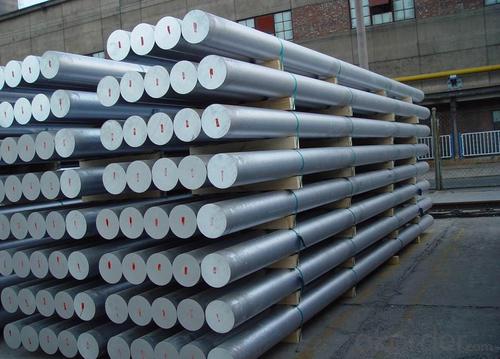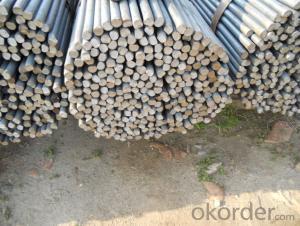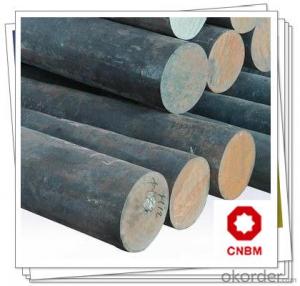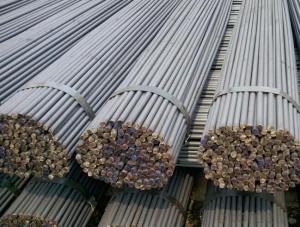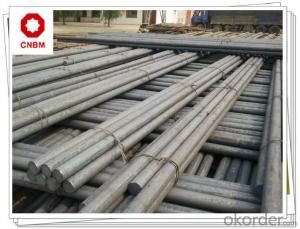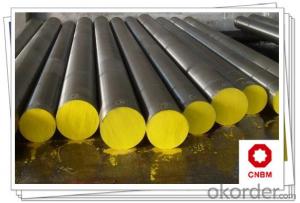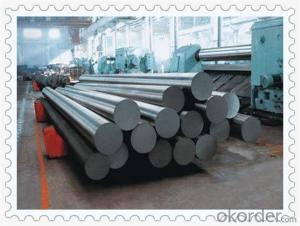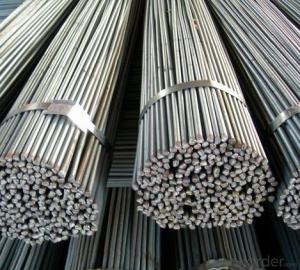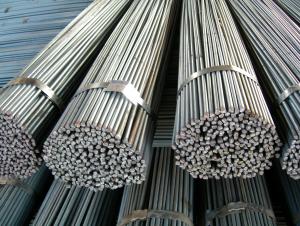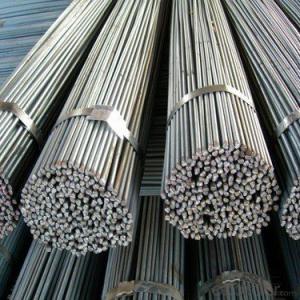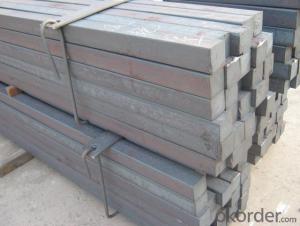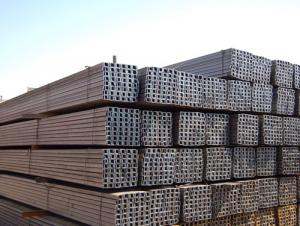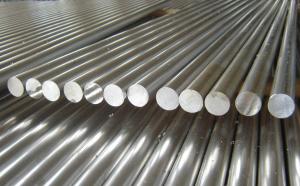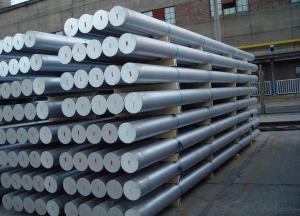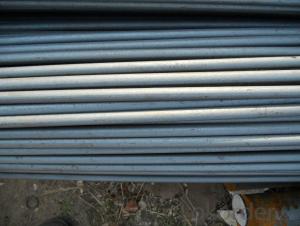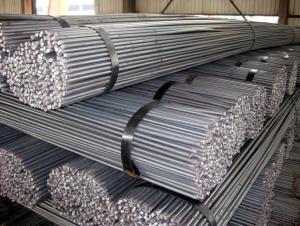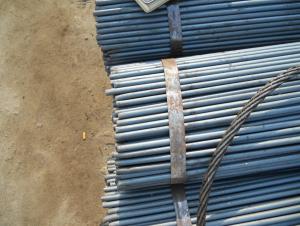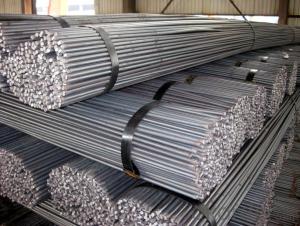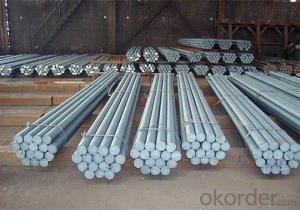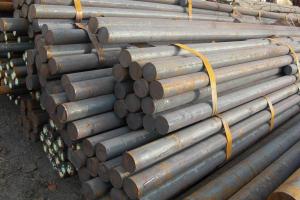high quality round bar 5MM-100MM Q235 ou Q195
- Loading Port:
- Shanghai
- Payment Terms:
- TT OR LC
- Min Order Qty:
- 25 m.t.
- Supply Capability:
- 20000 m.t./month
OKorder Service Pledge
OKorder Financial Service
You Might Also Like
ROUND BAR Details:
| Minimum Order Quantity: | Unit: | m.t. | Loading Port: | ||
| Supply Ability: | Payment Terms: | Package: | wire bundle |
Product Description:
Specifications of Wire Rod Q235:
Steel Grade: Q235, Standard: GB Diameter: 5.5mm, 6.5mm, 7mm,8mm,9mm,10mm,12mm,14mm
Diameter Tolerance:±0.3mm 6.5mm can be drawing into 2mm/8.0mm can be drawing into 3mm
Brand Name: N-RIVER Place of Origin: Hebei, China Mainland Application: construction, building etc
Chemical Composition:
Please kindly find our chemistry of our material based on Q235 as below for your information
Trademark | Rank | Chemical composition (quality score) % | |||||
C | Si | Mn | S | P | |||
| ≤ |
| ≤ | ≤ | |||
Q235 | A | 0.14-0.22 | 0.30 | 0.30-0.65 | 0.050 | 0.045 | |
Q235 | B | 0.12-0.20 | 0.30 | 0.30-0.70 | 0.045 | 0.045 | |
Trademark | Rank | Pulling Test | |||||
Bend PointΔs/Mpa | Tensile Strength | Elongation Ratioδ5% | |||||
Thickness (Diameter) /MM | Thickness (Diameter) /MM | ||||||
≤16 | 16-40 | ≤16 | 16-40 | ||||
≥ | ≥ | ||||||
Q235 | A | 235 | 225 | 375-500 | 26 | 25 | |
Q235 | B | 235 | 225 | 375-500 | 26 | 25 | |
Usage and Applications of Wire Rod Q235:
After hot-rolled the products shaped into coil and delivery as finished product, including round, square, rectangular, hexagonal and so on. Since most of the products are round, it is generally called wire rod. Carbon steel wire rod is widely used in construction and manufacturing. Carbon steel wire rod is mainly used for reinforcement of reinforced concrete and welded structure or reprocessed (roberts , nail, etc.) materials, especially used to produce wire drawing, welding electrode, nails, spring, electronic, precise machinery parts and so on.
Packaging & Delivery of Wire Rod Q235:
Packaging Detail: products are packed in coil and then shipped by container or bulk vessel
Each coil weight: 2-3MT
Delivery Detail: within 45 days after received deposit or LC.
Label: to be specified by customer, generally, each bundle has 1-2 labels
Trade terms: FOB, CFR, CIF
- Q: What are the different types of steel round bar profiles?
- There are several different types of steel round bar profiles, including solid round bars, hollow round bars, and threaded round bars.
- Q: What are the different surface finishes for stainless steel round bars?
- Stainless steel round bars can have different surface finishes depending on the desired aesthetic appeal and functional requirements. Some of the common surface finishes for stainless steel round bars include: 1. Bright Annealed (BA): This is a smooth and highly reflective finish achieved by annealing in a controlled atmosphere. It provides a mirror-like appearance and is often used for decorative applications. 2. Mill Finish: Also known as hot rolled or hot-rolled annealed and pickled (HRAP), this is the untreated surface finish directly from the mill. It has a rough and pitted texture and is commonly used for industrial applications where appearance is not the primary concern. 3. Satin Finish: Also referred to as brushed or dull polished finish, this finish is achieved by brushing the surface of the stainless steel round bar with a fine abrasive material. It creates a soft and matte appearance with visible parallel lines. 4. Polished Finish: This finish is achieved by using progressively finer abrasive materials to polish the surface of the stainless steel round bar. It results in a high-gloss, mirror-like finish that is commonly used for decorative purposes. 5. Ground Finish: This finish is achieved by grinding the surface of the stainless steel round bar using abrasive belts or wheels. It creates a uniform and smooth surface with a matte appearance. 6. Bead Blasted Finish: This finish is achieved by bombarding the surface of the stainless steel round bar with small glass beads at high pressure. It creates a uniform and matte appearance with a slightly textured feel. 7. Electropolished Finish: This finish is achieved by immersing the stainless steel round bar in an electrolytic bath and applying an electric current. It removes a thin layer of material, resulting in a smooth and shiny surface with improved corrosion resistance. Each surface finish has its own unique characteristics and is chosen based on the specific requirements of the application.
- Q: How do you prevent rust on steel round bars?
- There are various effective methods available to prevent rust on steel round bars. Here are some strategies you can utilize: 1. Employ a protective coating: An effective way to prevent rust is by applying a protective coating such as paint, varnish, or enamel. These coatings act as a barrier, preventing moisture and oxygen from reaching the steel surface and causing rust. 2. Opt for galvanization: Galvanizing steel round bars involves coating them with a layer of zinc. This process creates a protective barrier, as the zinc acts as a sacrificial anode, corroding instead of the steel. Galvanized steel is highly resistant to rust and is commonly used in outdoor applications. 3. Utilize powder coating: Powder coating is another effective method of preventing rust on steel round bars. In this process, a dry powder is electrostatically applied to the steel surface, which is then cured under heat. The resulting coating provides excellent protection against rust and corrosion. 4. Maintain regular cleaning and maintenance: To prevent rust, it is important to regularly clean your steel round bars and remove any dirt, moisture, or other corrosive substances. Additionally, applying a rust inhibitor or lubricant can further protect the steel from corrosion. 5. Ensure proper storage: Proper storage of steel round bars is crucial in reducing the risk of rust. It is advisable to store them in a dry and well-ventilated area, avoiding direct contact with the ground or moisture-prone areas. Using pallets or racks to keep the steel elevated and properly spaced can also help prevent rust formation. 6. Avoid exposure to harsh environments: Exposing steel round bars to harsh environments, such as saltwater or acidic chemicals, significantly increases the risk of rust. If feasible, it is recommended to protect the steel from prolonged exposure to these substances or consider using a more corrosion-resistant material in such conditions. By implementing these preventive measures, you can effectively minimize the likelihood of rust formation on steel round bars, ensuring their durability and preserving their structural integrity.
- Q: What kind of material is the first round steel?
- [round bar] refers to the cross section of round solid steel. Round bar is divided into three parts: hot rolling, forging and cold drawing.
- Q: Can steel round bars be used in the manufacturing of machinery?
- Yes, steel round bars can be commonly used in the manufacturing of machinery. The high strength, durability, and versatility of steel make it an ideal material for various components and parts used in machinery production. Steel round bars can be machined, welded, and formed into desired shapes, making them suitable for use in shafts, gears, axles, and other critical machine components.
- Q: Can steel round bars be used for making bicycle frames or handlebars?
- Bicycle frames and handlebars can be made using steel round bars. Steel is widely used in bike manufacturing because it is strong, durable, and affordable. Round bars made of steel provide excellent rigidity and stability, which are crucial for maintaining the structural integrity of a bike frame or handlebars. Moreover, steel has high tensile strength, enabling it to withstand the pressures and strains encountered during cycling. It is important to note that different types of steel, like chromoly steel, may be preferred for bike frames and handlebars due to their specific advantages, such as improved strength-to-weight ratio. However, in general, steel round bars are a suitable option for constructing bicycle frames and handlebars.
- Q: What is the difference between carbon steel and alloy steel round bars?
- Carbon steel and alloy steel round bars are both widely used in various industries, but they differ in their composition and properties. Carbon steel round bars are primarily made up of iron and carbon, with trace amounts of other elements. The carbon content typically ranges from 0.05% to 2.0%, depending on the grade. These bars are known for their strength and hardness, making them suitable for applications that require high durability and wear resistance. Carbon steel round bars also have good machinability, meaning they can be easily shaped and formed into desired configurations. However, they may have limited corrosion resistance and may require additional protective coatings in corrosive environments. On the other hand, alloy steel round bars are made by adding various alloying elements to carbon steel. These alloying elements can include elements such as manganese, chromium, nickel, and molybdenum, among others. The addition of these elements enhances the properties of the steel, such as increased strength, toughness, and resistance to wear and corrosion. Alloy steel round bars are often chosen for applications that require specific properties, such as high temperature resistance, high strength-to-weight ratio, or improved machinability. In summary, the main difference between carbon steel and alloy steel round bars lies in their composition and resulting properties. Carbon steel round bars are primarily made up of iron and carbon, offering good strength and hardness, but may have limited corrosion resistance. Alloy steel round bars, on the other hand, have added alloying elements that enhance specific properties, such as increased strength, toughness, and corrosion resistance. The choice between carbon steel and alloy steel round bars will depend on the specific requirements of the application.
- Q: Can steel round bars be used in the production of machinery?
- Yes, steel round bars can be used in the production of machinery. Steel round bars are commonly used in the manufacturing industry for various applications, including the production of machinery. The high strength and durability of steel make it an ideal material for constructing machine components that require strength and rigidity. Steel round bars can be machined, shaped, and welded to create different parts such as shafts, gears, axles, and structural components in machinery. The use of steel round bars ensures the reliability and longevity of the machinery, making it a preferred choice in many industries.
- Q: What are the different types of steel round bar alloys for improved corrosion resistance?
- Improved corrosion resistance is associated with various types of steel round bar alloys. Stainless steel, weathering steel, and duplex stainless steel are among the commonly utilized alloys. Stainless Steel, for instance, contains a minimum of 10.5% chromium. As a result, it forms a thin layer of chromium oxide on the steel surface, serving as a protective barrier against corrosion. This protective layer significantly minimizes the likelihood of rust and other forms of corrosion. Different grades of stainless steel, such as 304 and 316, offer varying degrees of corrosion resistance based on the specific application. Weathering Steel, also known as Corten steel, acquires a rust-like appearance when exposed to the weather. This unique characteristic aids in its resistance against atmospheric corrosion. Additionally, the inclusion of copper, chromium, and nickel further enhances its corrosion resistance, allowing it to withstand harsh environmental conditions without requiring painting. Duplex Stainless Steel, on the other hand, combines austenitic and ferritic stainless steels. Its remarkable corrosion resistance is attributed to its high content of chromium and molybdenum. This type of alloy is particularly adept at combating localized corrosion, including pitting and crevice corrosion. Consequently, it finds great utility in aggressive environments like the marine and chemical industries. It is essential to recognize that the selection of a suitable steel round bar alloy for enhanced corrosion resistance hinges upon the specific requirements of the application and the surrounding environmental conditions. Seeking guidance from a materials engineer or corrosion specialist can prove beneficial in determining the most appropriate alloy for a given situation.
- Q: What are the advantages of using heat-treatable steel round bars?
- Using heat-treatable steel round bars offers several advantages: 1. Strength Enhancement: Controlled heating and cooling processes can be applied to heat-treatable steel round bars, which enhance their strength and hardness. This renders them suitable for applications demanding high strength and durability. 2. Enhanced Resistance to Wear: Heat treatment enables the development of a hardened surface layer on the steel round bars, significantly improving their wear and abrasion resistance. As a result, they are ideal for use in industries such as manufacturing, construction, and automotive, where components experience heavy wear and tear. 3. Tailored Customization: Heat-treatable steel round bars possess the advantage of easy customization to meet specific requirements. By adjusting the heat treatment process, the bars' hardness, strength, and other mechanical properties can be tailored to suit different applications, ensuring optimal performance. 4. Convenient Machinability: Heat-treatable steel round bars generally exhibit good machinability, allowing for easy cutting, drilling, or shaping into various forms without compromising their structural integrity. This convenience reduces production time and costs. 5. Versatility: Heat-treatable steel round bars find versatile applications across a wide range of industries, including construction, manufacturing, oil and gas, automotive, and aerospace. They are commonly utilized in the production of shafts, gears, bolts, axles, and other critical components. 6. Long-term Cost-effectiveness: Although heat-treatable steel round bars may initially have a higher cost compared to non-heat-treatable or lower-grade steels, their durability and enhanced properties make them cost-effective in the long run. The improved strength and wear resistance contribute to a longer service life, reducing the need for frequent replacements and maintenance. In conclusion, the utilization of heat-treatable steel round bars offers a multitude of benefits, including increased strength, improved wear resistance, customized properties, easy machinability, versatility, and long-term cost-effectiveness. These advantages position them as the preferred choice for demanding applications requiring high-performance materials.
Send your message to us
high quality round bar 5MM-100MM Q235 ou Q195
- Loading Port:
- Shanghai
- Payment Terms:
- TT OR LC
- Min Order Qty:
- 25 m.t.
- Supply Capability:
- 20000 m.t./month
OKorder Service Pledge
OKorder Financial Service
Similar products
Hot products
Hot Searches
Related keywords
